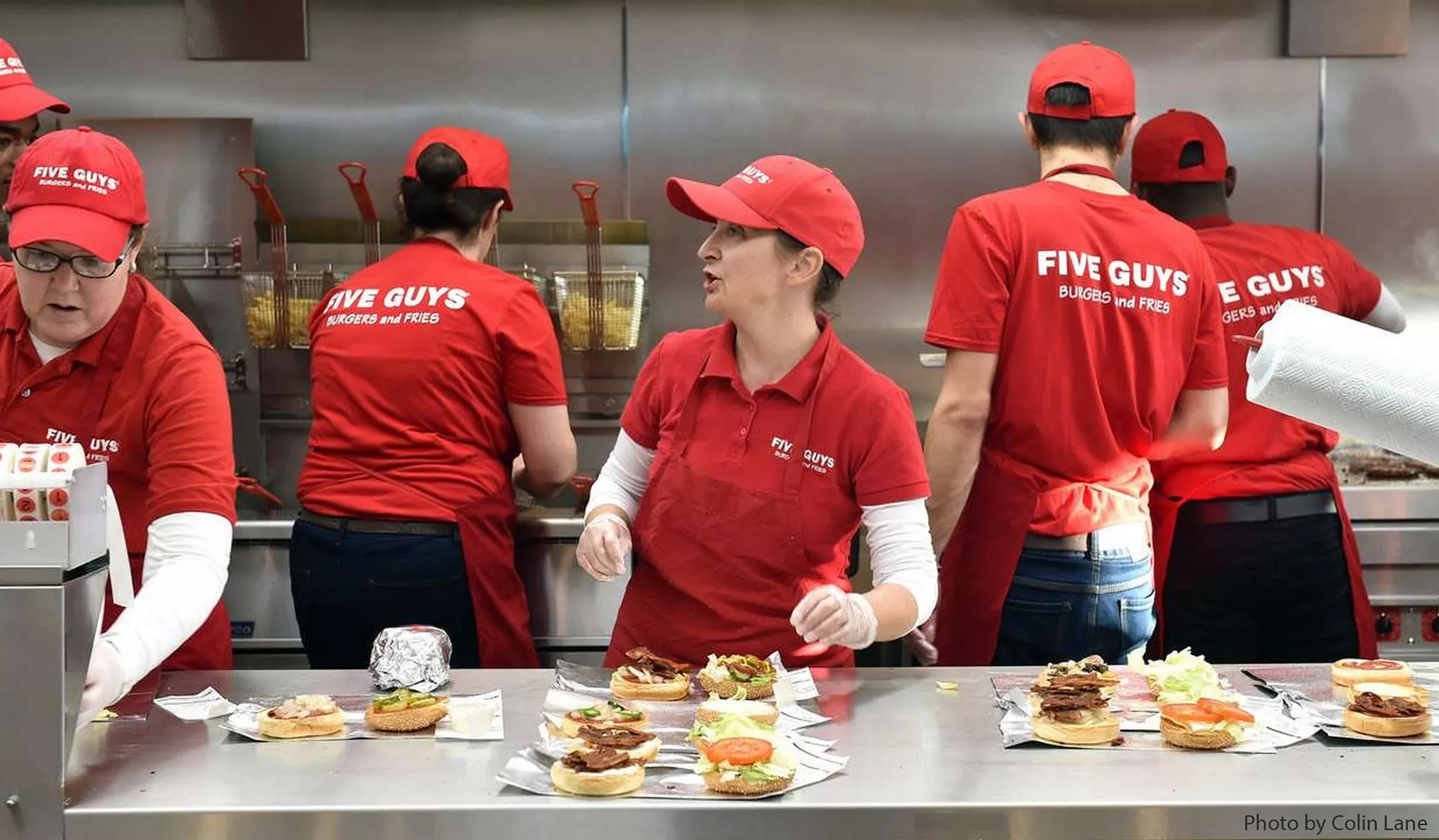What’s Cooking with Five Guys’ VR Training Techniques
The company’s secret ingredient to consistent quality and service.
In the quest for the perfect dine-in experience, restaurants have aimed to improve continuity between their stores. When moving from store to store, proper training has become an essential skill for cooks, chefs, and staff to deliver the top reputations for restaurants.
To tap these skills, companies such as Five Guys have moved into the immersive training space with a pilot programme to create optimised learning experiences for new hires and continuing learners.
To discuss the benefits of this, XR Today has the pleasure of interviewing Corey Smith, Instructional Designer. A ‘seasoned’ designer, Smith has created training materials for some of the world’s top restaurant brands, including Five Guys, Papa Johns, and others.
Becoming the ‘Creme de la Crème’
To begin, he explained Five Guys had developed a “really talented L&D team [with] different skill sets in technology and adult learning approaches” to ensure that customers “get the same great quality burger and fries across the board.”
When asked why Five Guys turned to ARuVR’s immersive learning technologies, Smith said that, after re-evaluating its previous materials, the company wanted to “move with the times and show that [teaching] materials can be more functional, fun, interactive, and immersive.”
Speaking on such methodologies, he said: “We want to get to those short, sharp learnings [by] getting to the point, allowing our crew members and managers to know exactly what they’re doing as quickly as possible.”
Turning to Five Guys, the company then began exploring XR learning and development technologies with ARuVR. Initially, the company began developing Virtual Reality (VR) materials to include in its curricula. This would allow for more hands-on, in-store modules. However, for the future, it plans to explore how it can utilise VR to bring to life other tasks and potential leadership development methodologies.
With ARuVR’s solution, Five Guys could “get a better immersive [simulation] to help our crew members be in a store.
Crew members can be in-store virtually while completing their theory training. The more immersive theory experience better equips them for when they start learning hands-on behind the cook line.
He continued, “For example, if you’ve never worked the grill before, you’d be able to do it as a virtual [simulation]. Stand at the grill, learn how to use the patty press, certain utensils, when to move the burger to the next section, and keep that flow going”
However, he needed to consider many factors for trainees. Due to diverse learning styles, accommodations, as well as cultural and language demographics, Five Guys stressed the need for inclusivity for its training programme.
To boost learner retention rates, he also divided modules into “bite-sized,” 2-3 minute intervals where trainees could “pick it up and keep learning or put [the coursework] down.”
ARuVR: A Key Ingredient to VR Learning
When asked about ARuVR’s technologies, he said that it was easy to create scenarios for learners, as a “pick up and put together” method of course building.
He explained further, “Working with the guys at ARuVR, they’re very collaborative, allowing us to load content while helping us advance it even more with their background in learning and software use. We then combined those two things to get the best product”
According to Smith, Five Guys currently uses laptops, smartphones, and tablets to train students, but plans to fully roll out the programme on VR headsets in the coming months after extensive testing.
What’s Next for XR Training?
Finally, the executive told XR Today that, regarding the Meta Quest 3 and Apple Vision Pro, he said that the headsets could help facilitate “fully immersive” stores in the future.
In future curricula, people could explore virtual environments, train with real-time 3D (RT3D) content, and experiment with other digital assets, deepening immersive training techniques.
He concluded, “You would walk around, being fully immersive by picking certain areas in the store. These would tell you how many bottles you should have at the condiment station […] You can go to any store to determine what it should look like. They can envision what the perfect store looks like, as a point of reference, and come back to do more learnings”
Concluding on immersive training, Smith said that the industry would see how far technologies can push us.
“I’m all for making sure that learning is fun, interactive, and something that allows people to believe they’re not learning, whilst learning. With technology continuously evolving, we’re getting to the point where this happens.”


